- Home
- Ship Lap
Ship Lap Siding
Ship Lap Siding is old world styling with a new modern twist. People have used this type of siding for centuries and it continues to be one of the most popular home siding types around today. Often called Clapboard or Horizontal siding, this type of home siding is found in every neighborhood in America.
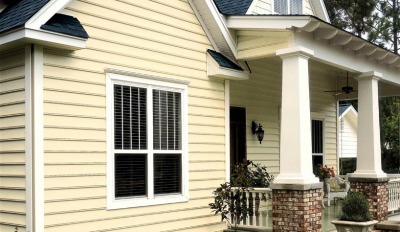 Ship Lap Siding is siding that looks like long narrow planks of wood running across your house from end to end.
Ship Lap Siding is siding that looks like long narrow planks of wood running across your house from end to end.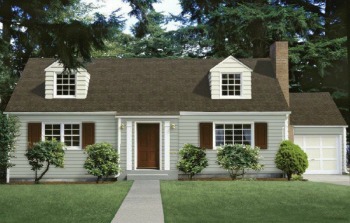 Ship Lap Siding is in every neighborhood
Ship Lap Siding is in every neighborhood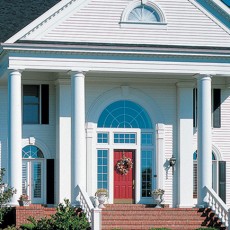 Ship Lap Siding adds elegance to your home.
Ship Lap Siding adds elegance to your home.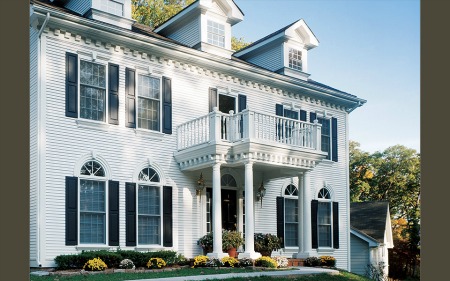 Ship Lap Siding is a classic look, still popular today.
Ship Lap Siding is a classic look, still popular today.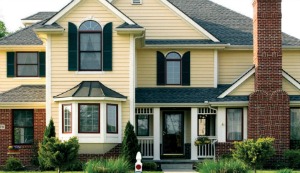 Ship Lap Siding adds curb appeal to any house.
Ship Lap Siding adds curb appeal to any house.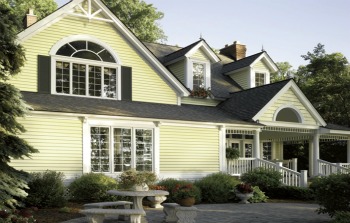 Ship Lap Siding, classic old-world type of siding with a new modern twist.
Ship Lap Siding, classic old-world type of siding with a new modern twist.What Is Ship Lap Siding?
Ship Lap Siding is siding that looks like long narrow planks of wood that is attached to your house and runs from end to end, or horizontally across the house.
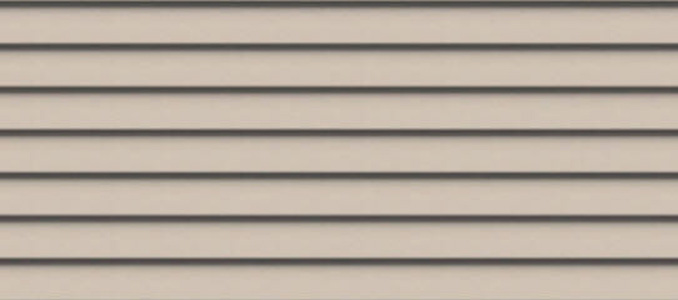 Ship Lap or Clapboard Siding
Ship Lap or Clapboard Siding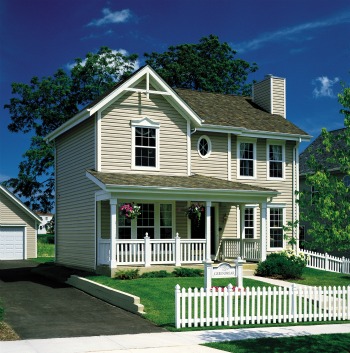 Ship Lap Siding or Clapboard Siding is one of the most popular home sidings still today.
Ship Lap Siding or Clapboard Siding is one of the most popular home sidings still today.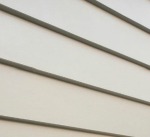 Ship Lap Siding or Clapboard looks like long narrow wooden planks running from end to end or horizontally across the house.
Ship Lap Siding or Clapboard looks like long narrow wooden planks running from end to end or horizontally across the house.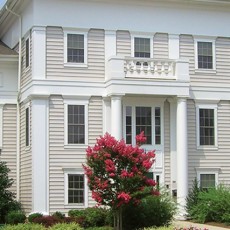 Clapboard or Ship Lap Siding has a classic look that adds curb appeal.
Clapboard or Ship Lap Siding has a classic look that adds curb appeal.Why Do They Call It Ship Lap Siding?
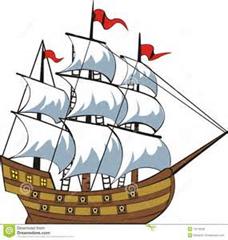
 Old world ships that sailed to America had smooth sides made of wood.
Old world ships that sailed to America had smooth sides made of wood.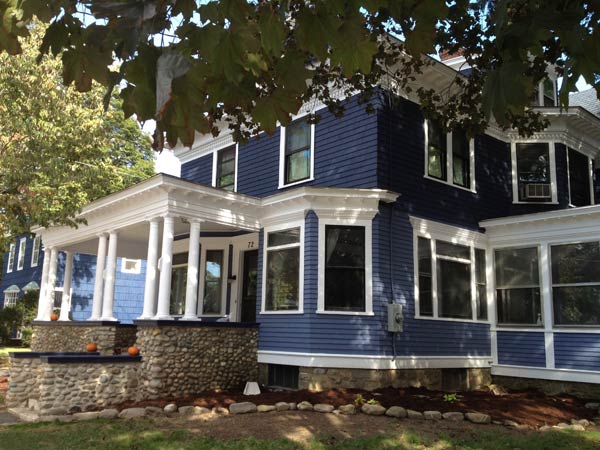 Ship Lap Siding adds that special touch of class to any home.
Ship Lap Siding adds that special touch of class to any home.Why do they call it Ship Lap Siding? When people started to come to America from Europe, and especially England, they sailed in wooded ships. They were used to living in homes that had wooden exterior walls made by the local craftsmen that lived and worked in their towns and cities.
People had been using sawn lumber from trees that had been cut down for hundreds of years to make the exterior walls of their homes. Some people had used brick or stone, but the vast majority of people used lumber cut from trees to build thier homes.
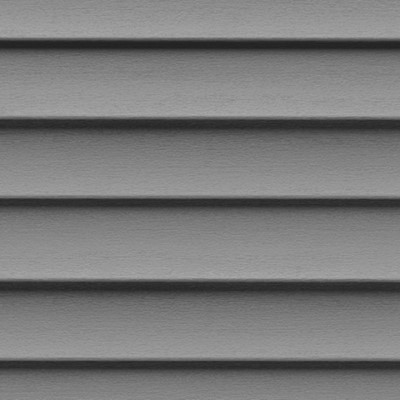 Traditional Ship Lap Siding
Traditional Ship Lap SidingOld Word Ship Lap Siding
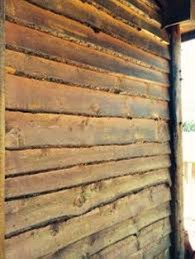 Cutting down trees and sawing long planks of thin wood was a fast way to build homes.
Cutting down trees and sawing long planks of thin wood was a fast way to build homes.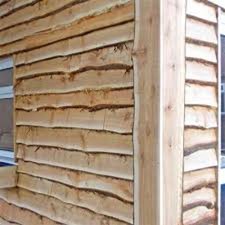 A quick way to build many homes in a short time.
A quick way to build many homes in a short time.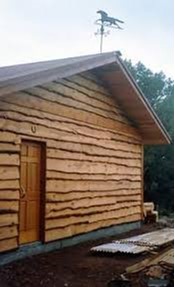 After sawing shiplap planks.
After sawing shiplap planks.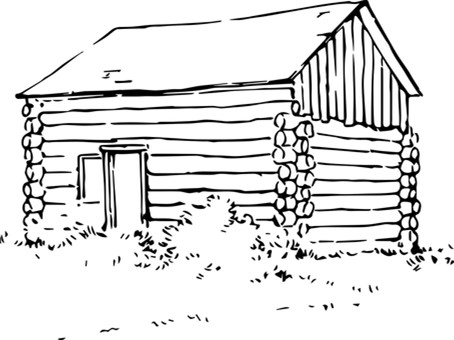 Log Cabins came first.
Log Cabins came first.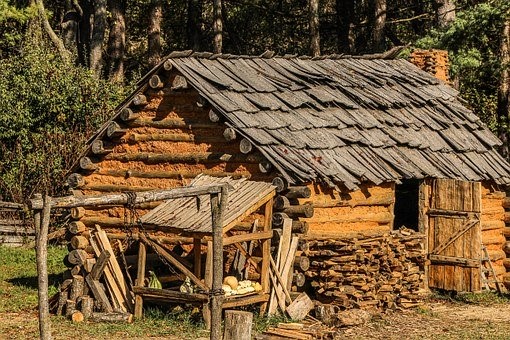 People could just cut down trees and stack them on top of each other to make a crude but effective home.
People could just cut down trees and stack them on top of each other to make a crude but effective home.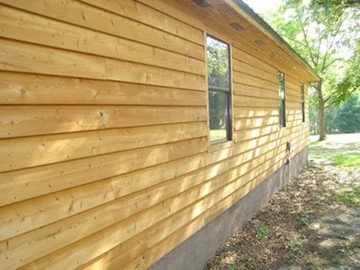 After they build sawmills to cut uniform planks, they got really good at making the siding.
After they build sawmills to cut uniform planks, they got really good at making the siding.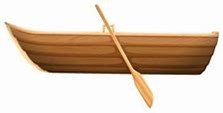 Ship Lap
Ship Lap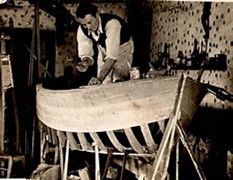 Many people from Europe had the skills to make boats and ships using shiplap techniques.
Many people from Europe had the skills to make boats and ships using shiplap techniques.Many of the colonist who came to America were familiar with the ship building techniques that were so common in England and France in the early 16,17, and 18th century Europe. It was an easy transition to go from chopping down trees close by and stacking them on top of each other to make a crude but effective log cabin, to sawing the trees into long planks of wood and using the planks to build the houses.
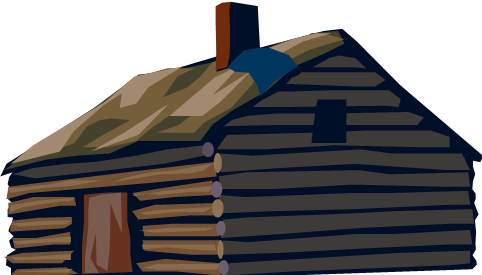 Early log cabin. Just stack logs on top of each other to make a cabin.
Early log cabin. Just stack logs on top of each other to make a cabin.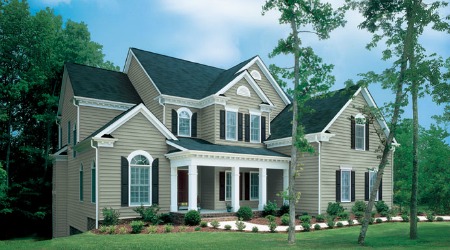
It wasn't long before they got very good and creative at building houses out of sawn planks.
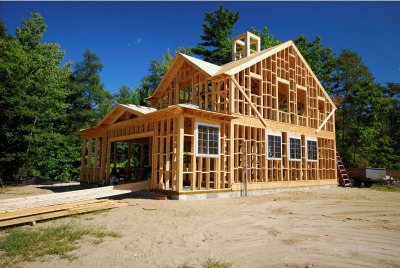 modern homes are built around wooden framing.
modern homes are built around wooden framing.Once people began to build frames out of wood, the next step was to nail the long thin wooden planks to the frame. Imagination made it possible to create a whole new industry.
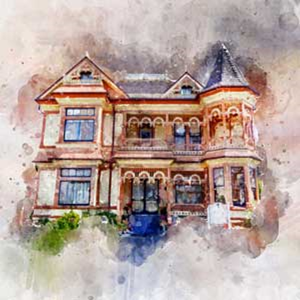 Old Victorian Style building.
Old Victorian Style building.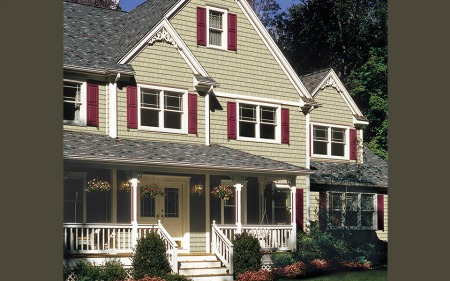
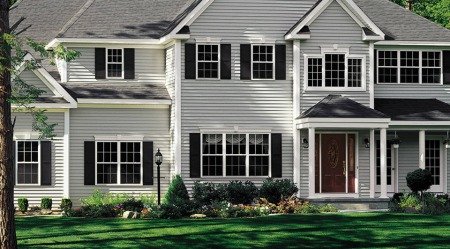 A modern twist to old type Ship Lap siding.
A modern twist to old type Ship Lap siding.Types of Siding
Today homeowners have many diverse types of home siding to choose from. Wood, brick, stone, aluminum, manufactured wood, cement board siding, and of course the most popular home siding, vinyl siding.
Other Types of Siding That Looks Like Wood
Since most home siding materials are designed to look like wood siding, today we have a diverse array of man-made sidings that mimic real wood. Stronger and more durable than real wood. Less expensive than real wood siding. Man-made sidings have much less maintenance than real wood and most are both moisture and insect resistant.
Hardie Board Siding
Hardie Board Siding sometimes called James Hardie Siding, is a man-made siding that is stronger than real wood, more durable than vinyl siding, is fire-resistant, termite resistant, mold resistant and even water and rot resistant.
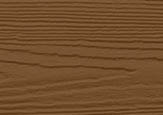 Hardie Board Siding sometimes called James Hardie Siding
Hardie Board Siding sometimes called James Hardie Siding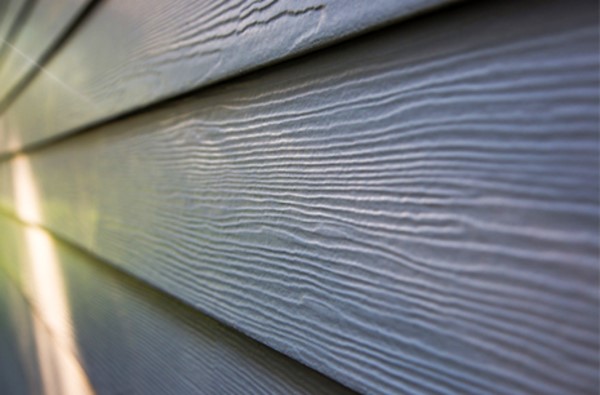 Hardie Board Siding looks just like wood, but it is stronger than real wood siding.
Hardie Board Siding looks just like wood, but it is stronger than real wood siding.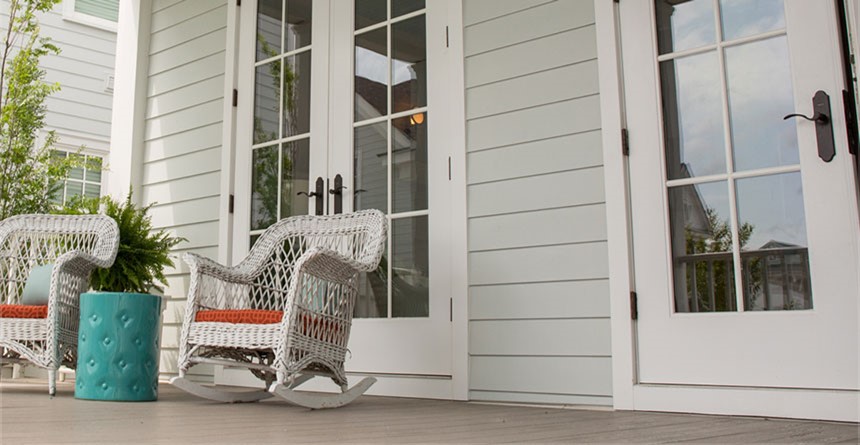 James Hardie Siding, the look of old-world charm, with modern-day products.
James Hardie Siding, the look of old-world charm, with modern-day products.For more information on James Hardie Siding, called Hardie Board Siding, Click Here.
Engineered Wood Siding
Engineered Wood Siding have the look and texture of real wood only stronger and more durable than real wood. They are less expensive than real wood siding, engineered wood looks exactly like wood, and is made from wood strands and/or wood fibers, strong resins and zinc borate added to protect from termites and fungal decay.
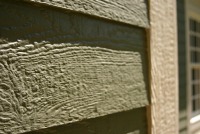 Engineered Wood Siding comes in different textures, from Cedar cut to smooth finish.
Engineered Wood Siding comes in different textures, from Cedar cut to smooth finish.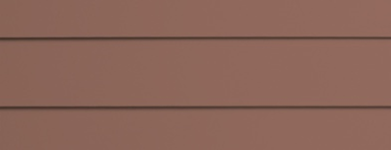 Smooth Engineered Wood Siding has the classic look of Ship Lap or Clapboard siding.
Smooth Engineered Wood Siding has the classic look of Ship Lap or Clapboard siding.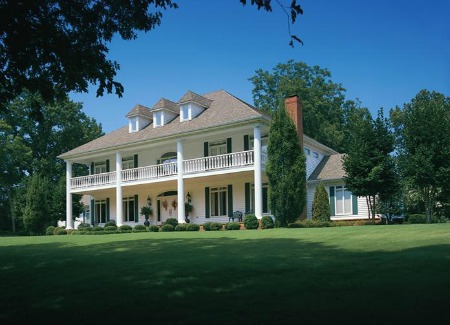 Classic Look of Clapboard Siding, using modern products.
Classic Look of Clapboard Siding, using modern products.To see more information on Engineered Wood Siding, and the many different types and syles available,
Click Here to go to Engineered Wood Siding
Cement Board Siding
Cement Board Siding is a man-made product made using a composite material with Portland cement, sand, and natural fibers such as cellulose. Sometimes called Fiber Cement Board, or Cement Fiber Siding.
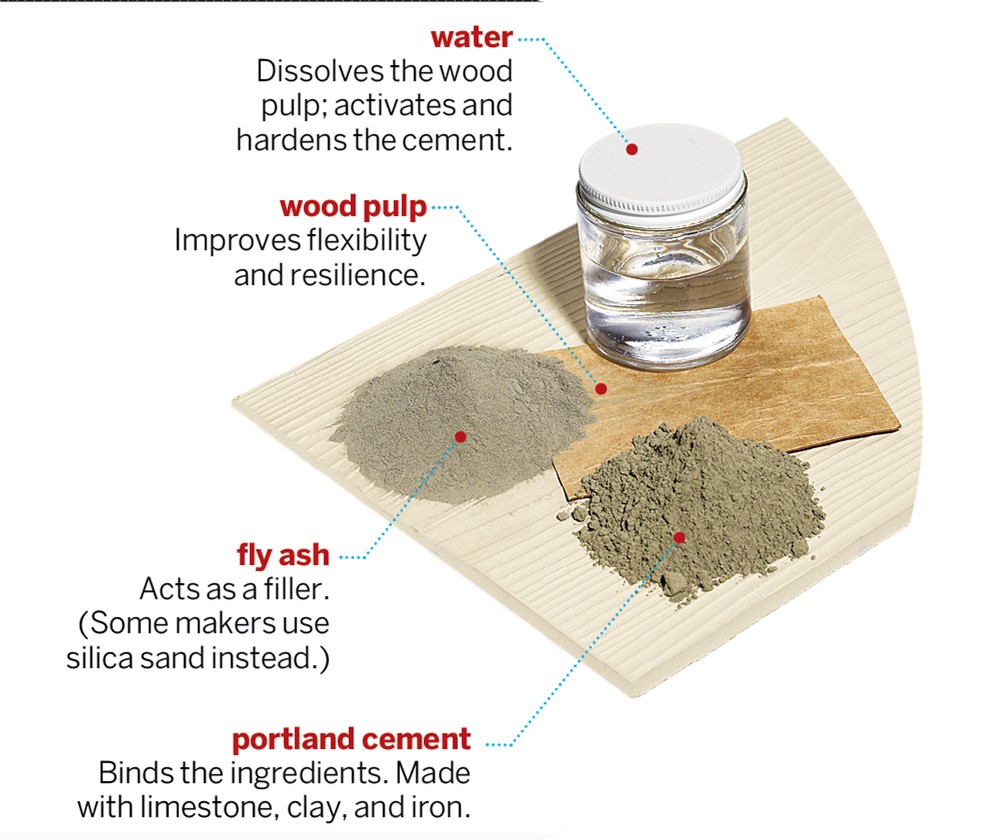
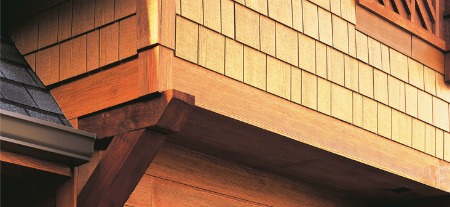 Cement Board Siding looks like real wood but is much stronger with less maintenance.
Cement Board Siding looks like real wood but is much stronger with less maintenance.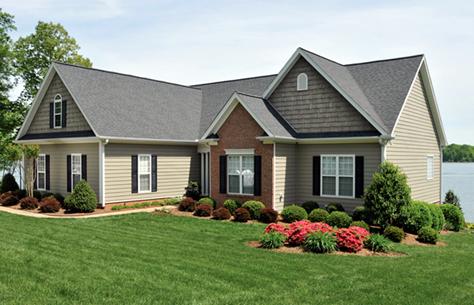 Cement Board Siding is ideal for harsh weather areas.
Cement Board Siding is ideal for harsh weather areas.To see more information on Cement Board Siding and the many different products available to homeowners,
Click here to Go to Cement Board Siding
Fiber Cement Board Siding
Fiber Cement Board Siding is a great alternative to real wood siding. Beautifully eloquent, incredibly minimal maintenance compared to real wood siding, and is strong and durable.
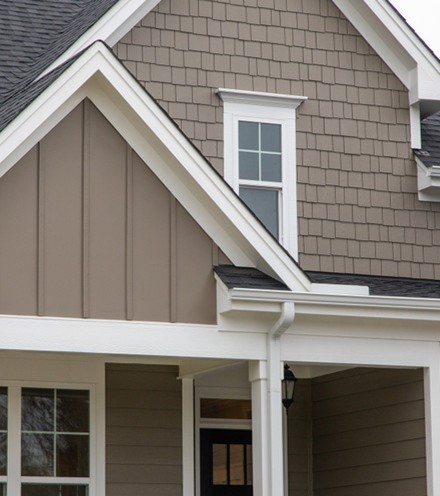 Fiber Cement Board Siding comes in many different types and styles offering many homeowner options.
Fiber Cement Board Siding comes in many different types and styles offering many homeowner options.Fiber Cement Board is an exceptionally good siding for coastal areas where high winds and moisture is a concern. It usually requires professional installation.
To see more information on Fiber Cement Board Siding, Click Here.
Vinyl Siding
Vinyl Siding is the number one selling home siding product in the U.S.
Vinyl Siding comes in all types and styles as the older wooden siding of yesteryear.
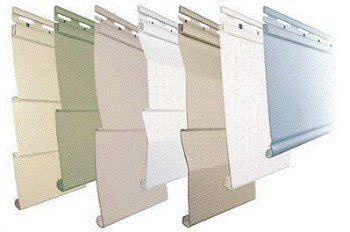 Basic Clapboard or Ship-Lap Siding
Basic Clapboard or Ship-Lap SidingToday's vinyl siding comes in an array of colors, sizes, textures, thickness, both insulated and non-insulated versions.

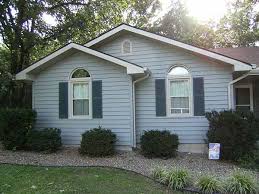 Ship Lap Siding is used in every neighborhood in America. Great curb appeal.
Ship Lap Siding is used in every neighborhood in America. Great curb appeal.To see more information on the many advantages of using Vinyl Siding,
click here to go to, The Vinyl Siding Institute
Clapboard Siding
 Clapboard Vinyl Siding or Ship-Lap Siding is very popular.
Clapboard Vinyl Siding or Ship-Lap Siding is very popular.Clapboard Siding or Ship Lap Siding, also known as Horizontal Siding, is the most popular home siding product in America. Mainly because it comes in so many diverse types and styles.
It comes in a wide array of colors, thicknesses, textures, and prices. Also, comes in both insulated and non-insulated versions.
To see more information on Clapboard Siding and the many distinct types and styles,
Click Here Go to Clapboard Siding
Board and Batten Siding
Board and Batten Siding is one of the more popular vinyl siding types. It has been around for many years and is sometimes called, Barn Siding because it was used for hundreds of years on rural barns all across the U.S.
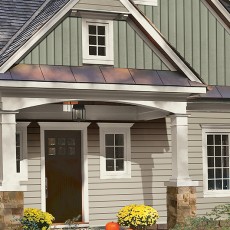 Here Board and Batten is used along with Clapboard siding to give a little enhanced curb appeal.
Here Board and Batten is used along with Clapboard siding to give a little enhanced curb appeal.To see more information on Board and Batten Siding, click here.
Cedar Shake Siding
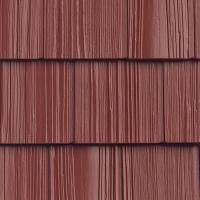 Cedar Shake Vinyl Siding looks just like real cedar shake siding.
Cedar Shake Vinyl Siding looks just like real cedar shake siding.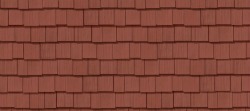 Staggard Edge Vinyl Cedar Shake
Staggard Edge Vinyl Cedar Shake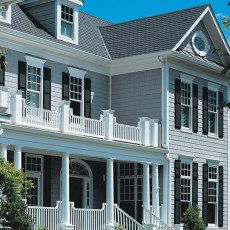
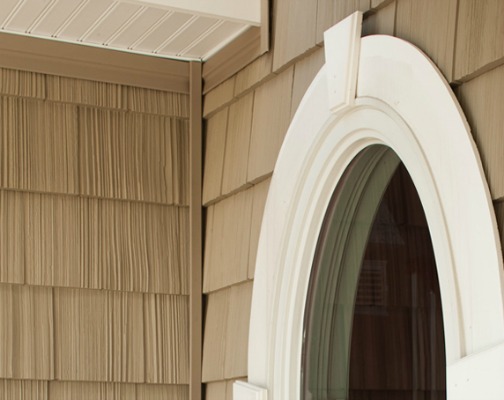 Cedar Shake Vinyl Siding
Cedar Shake Vinyl SidingTo see more information on Cedar Shake Vinyl Siding Click Here
Vinyl Siding Cost
How much does vinyl siding cost? That is a complicated question because each house is different. And each house will need different amounts of work to make it ready to install the new vinyl siding.
The amount of work a contractor will have to do to the house to make it ready to install the siding is a large part of the total price you will end up paying.
Vinyl siding costs will depend on the condition of your house, the size of your house, the quality of the siding you intend to purchase, the time of year, the amount of extra work required to make the house ready for the siding.
For example, is you house a one story or two story? It is harder and more complicated to install siding on a multi-story house because the contractor will have to install scaffolding to reach the top layers, this adds both time and man hours to the job which will increase the closing price.
How big is your house? This will make a significant difference in the amount of siding it will take to cover the exterior walls.
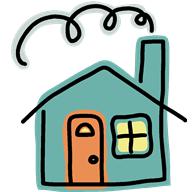 Little house
Little house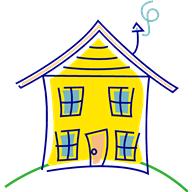 big house
big houseAnother large factor is the amount of water damaged, or insect damaged wood that will have to be repaired or replaced before the new siding can be installed. Again, more man-hours and labor expense.
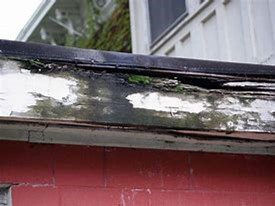 Insect and water damage must be fixed first
Insect and water damage must be fixed firstFor more information on the costs of installing vinyl siding, click here.


